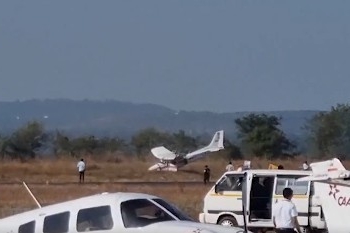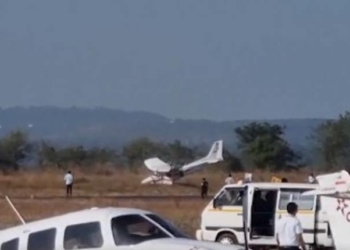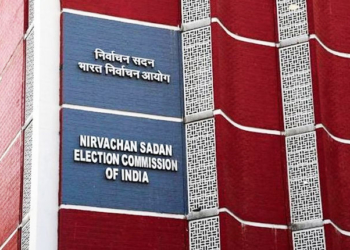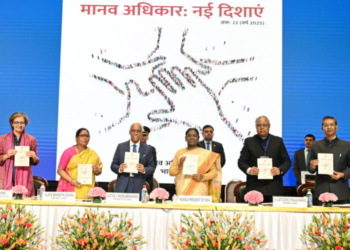Washington/New Delhi: The rapid, multidomain military campaign Operation Sindoor not only dismantled cross-border terror networks but became a full-scale validation of India’s defence transformation, a leading American defence analyst said on Thursday.
In his extensive analysis titled ‘India’s Operation Sindoor: A Battlefield Verdict on Chinese Weapons — And India’s Victory’, top urban warfare expert John Spencer reckoned that Operation Sindoor wasn’t just a military campaign but a technology demonstration, a market signal, and a strategic blueprint.
“India showed the world what self-reliance in modern warfare looks like — and proved that ‘Atmanirbhar Bharat’ works under fire,” Spencer wrote.
“Operation Sindoor pitted India’s indigenously developed weapons systems against Chinese-supplied platforms fielded by Pakistan. And India didn’t just win on the battlefield — it won the technology referendum. What unfolded was not just retaliation, but the strategic debut of a sovereign arsenal built under the twin doctrines of Make in India and Atmanirbhar Bharat,” he added.
Spencer, currently the Chair of urban warfare studies at the Modern War Institute and a Co-Director of the Urban Warfare Project, stated that “Pakistan’s proxy dependency” was no match to “India’s sovereign power” during Operation Sindoor which demolished terror infrastructure deep inside Pakistan after the heinous April 22 Pahalgam terror attack.
“India fought as a sovereign power — wielding precision tools it designed, built, and deployed with unmatched battlefield control. Pakistan fought as a proxy force, dependent on Chinese hardware that was built for export, not for excellence. When challenged, these systems failed — exposing the strategic hollowness behind Islamabad’s defence posture,” Spencer wrote.
Spencer also detailed how India’s transformation into a modern defence power began in 2014, when Prime Minister Narendra Modi launched the ‘Make in India’ initiative.
The goal, he said, was clear: reduce dependence on foreign arms imports and build a world-class domestic defence industry.
“The policy incentivized joint ventures, opened defence to foreign direct investment up to 74 per cent, and encouraged both public and private sector manufacturers to build sophisticated military hardware at home. Within a few years, systems like the BrahMos missile, K9 Vajra howitzer, and AK-203 rifle were being produced inside India—many with technology partnerships but increasing domestic control,” he stated.
Heaping praise on PM Modi, he highlighted how ‘Atmanirbhar Bharat’, or a self-reliant India, became a national security doctrine than just an economic policy following the combined shock of the Covid-19 pandemic and the Galwan Valley clash with China.
“India imposed phased bans on key defence imports, gave the armed forces emergency procurement powers, and poured investment into indigenous research, design, and production. By 2025, India had increased domestic content in defence procurement from 30 per cent to 65 per cent, with a goal of 90 per cent by the decade’s end,” he said.
India’s new doctrine, the leading expert reckons, was tested under fire on April 22 when Pakistan-backed militants killed 26 Indian civilians in a terror attack in Jammu and Kashmir’s Baisaran Valley.
Spencer then goes on to explain in detail how India’s arsenal proved just too much for Pakistan.
Jointly developed with Russia and now largely manufactured in India, the BrahMos supersonic cruise missiles was used to strike high-value targets like radar stations and hardened bunkers.
“Its speed and low radar cross-section make it nearly impossible to intercept,” says Spencer.
The Akash surface-to-air missile, developed by the Defence Research and Development Organisation (DRDO), India’s premier military research and development agency, and Bharat Dynamics, enabled coordinated response to multiple airborne threats – including drones, cruise missiles, and aircraft. It was integrated with the Akashteer Command & Control System, an AI-enhanced air defence network that provides real-time data fusion,
India’s first indigenously developed anti-radiation missile, Rudram-1 was also deployed to silence Pakistani ground-based radars and degrade situational awareness in key sectors of the Line of Control (LoC).
Spencer also mentioned how Netra Airborne Early Warning and Control (AEW&C), also built by DRDO on an Embraer platform, provided real-time tracking of enemy aircraft and missiles, vectoring Indian jets for deep-strike missions.
“Its effectiveness was evident when Pakistan’s Swedish Saab 2000 AEW&C was destroyed by a long-range missile,” said Spencer.
India also deployed Harop and SkyStriker drones — precision-guided ‘Kamikaze’ munitions that loiter over the battlefield and dive onto enemy targets. Harop is manufactured under license by Israel Aerospace Industries (IAI) and Bharat Electronics Limited (BEL) while SkyStriker is assembled domestically through an Elbit joint venture. They were used to destroy mobile radars, convoys, and high-value enemy infrastructure with minimal collateral damage.
At the same time, India’s Drone Detect, Deter, and Destroy System (D4S) neutralised dozens of Chinese-made Pakistani drones. The system reflects India’s transition from reactive air defence to proactive electronic warfare dominance.
Imported from the US but integrated into Indian mountain warfare doctrine, the M777 Ultra-Light Howitzer was used with Excalibur precision-guided shells to strike terrorist camps without crossing the LoC. Spencer mentioned how its airliftability and rapid deployment made it ideal for high-altitude operations.
India also deployed upgraded T-72s along the LoC for overwatch roles. The Zorawar, a new light tank optimized for high-altitude terrain, is under development and these systems signal India’s continued investment in mobility and firepower in challenging Himalayan terrain, Specner wrote.
Writing on India’s deployment of some of its most advanced fighter jets during Operation Sindoor, Spencer said that the Rafales led deep precision strikes using SCALP long-range cruise missiles to hit fortified enemy positions. It also carried Meteor air-to-air missiles, capable of hitting targets over 100 kilometers away—giving India a decisive edge in air combat.
Meanwhile, the Su-30MKI, a Russian-designed twin-engine heavy fighter built under license in India, and the Mirage 2000, another versatile French jet, provided firepower and flexibility, launching multiple strike packages and ensuring airspace control.
“These jets flew under the protective umbrella of the Netra Airborne Early Warning and Control (AEW&C) system, which acted like an eye in the sky—tracking enemy aircraft and coordinating the battlespace. Meanwhile, Rudram anti-radiation missiles were used in Suppression of Enemy Air Defenses (SEAD) missions, disabling enemy radar and air defence systems to ensure safe air operations,” the expert on military operatons detailed.
On the other hand, Spencer gave a detailed Pakistan’s strategic failures, also giving a detailed account of failure of Chinese systems.
During Operation Sindoor, he wrote, the JF-17 Thunder aircraft – produced in Pakistan but designed and built by China’s AVIC – failed to gain air superiority or contest Indian strikes.
“Their limited payload, outdated radar, and poor survivability were evident under Indian EW and air defence pressure,” said Spencer.
With the F-16 Fighting Falcons sidelined by US end-user agreements during Operation Sindoor, Pakistan was left without a frontline air dominance platform.
“Chinese imitations of Russia’s S-300 and Buk systems, the HQ-9 and HQ-16 were deployed to intercept Indian air and missile attacks. However, they failed under India’s jamming and deception operations. These systems were easily bypassed by BrahMos and loitering drones, revealing critical weaknesses.”
The LY-80 and FM-90 air defence systems, also Chinese-made, were unable to detect or stop India’s low-flying drones and precision munitions.
This, said Spencer, forced Pakistan to rely on passive air defence rather than any credible kinetic response.
Also used extensively by Pakistan for ISR and light strike roles, the CH-4s were repeatedly downed or jammed, underperforming in terrain and electronic environments dominated by India’s D4S system.
“Reports emerged that Turkish drone operators had to be brought in to manage UAVs — revealing both equipment and personnel dependency,” said Spencer.
Pakistan’s key airborne early warning platform, Swedish Saab 2000 AEW&C, was destroyed — likely by an S-400 system — crippling Pakistan’s airspace awareness and blinding command and control functions.
“By the end of the campaign, Pakistan had lost key radar stations, its premier AEW&C aircraft, dozens of drones, and its ability to contest Indian airspace,” concluded Spencer.
He also mentioned how India’s defence stocks surged in May, gaining investor trust while, in contrast, the Chinese defence stocks fell sharply after Operation Sindoor with AVIC, NORINCO, CETC — all taking hits as the battlefield disproved their marketing.
(IANS)
















